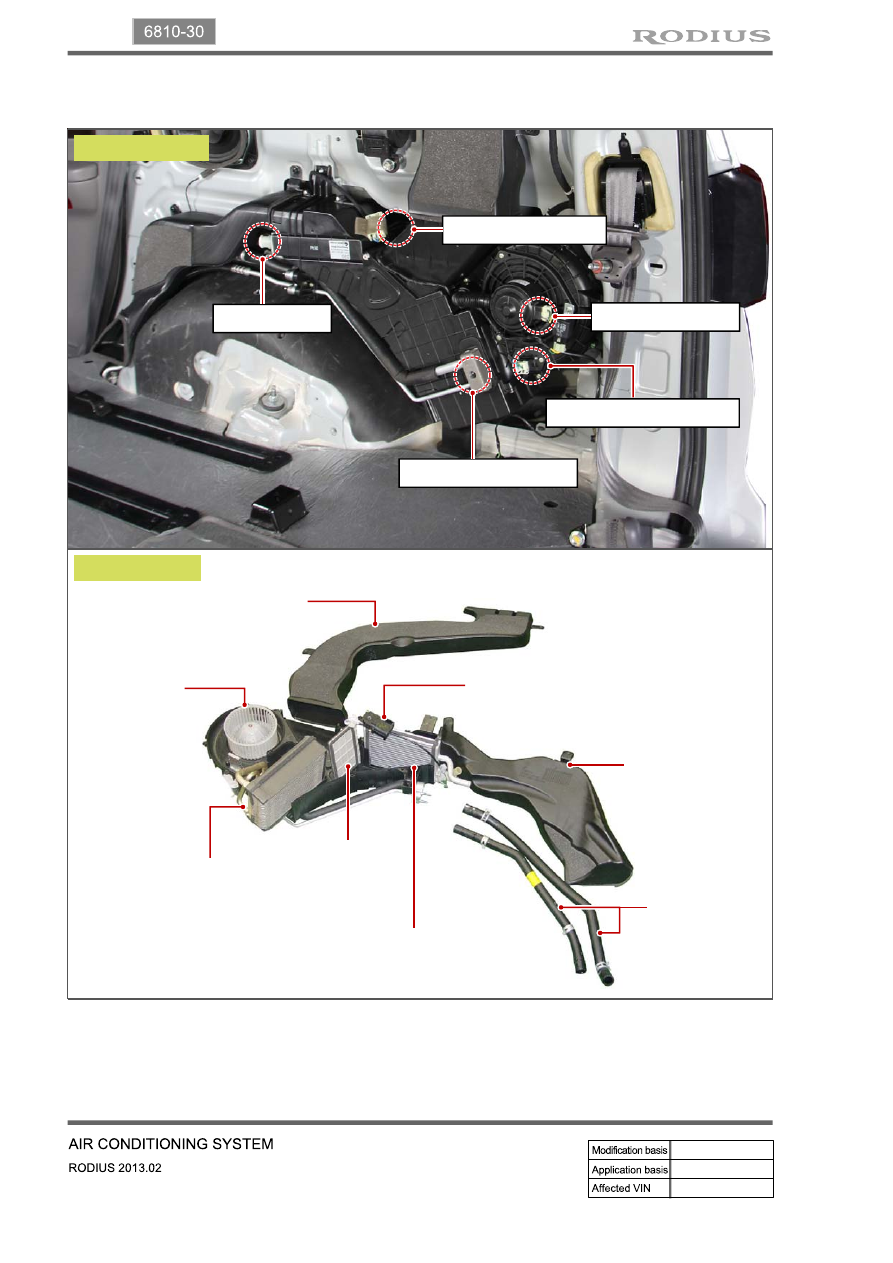SsangYong Rodius (2013 year). Service manual - part 180

01-14
(2) Rear Air Conditioner Module
Roof air conditioner duct
Blower motor
Evaporator
Mixer door
Heater core
Air mixer door actuator
Rear floor
heater duct
Heater &
air conditioner
pipes
Wiring layout
Components
Rear mode actuator
Rear expansion valve
Rear blower motor
Heater valve
Rear blower resistance